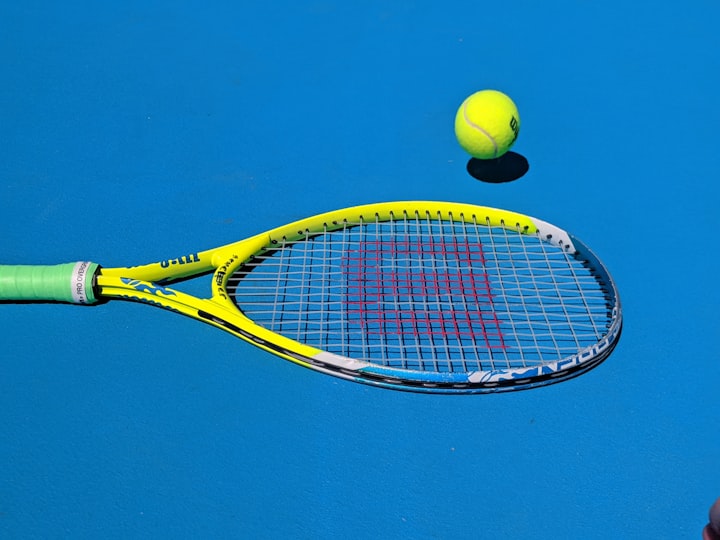Unleashing the Power
Resistance Training for Tennis Players

Tennis is a fast-paced and dynamic sport that demands strength, agility, and explosive power. While refining technique and practicing on the court are essential, incorporating resistance training exercises into your regimen can elevate your game to new heights. In this article, we will explore the relationship between resistance training and tennis, shedding light on the biomechanics of the sport in easy-to-understand terms while providing insightful tips to improve your performance.
Understanding Biomechanics in Tennis:
Biomechanics is the study of how forces interact with the body during movement. In tennis, it plays a crucial role in generating power, optimizing efficiency, and reducing the risk of injuries. Let's dive into some key aspects of the biomechanics of tennis:
1. Rotational Power:
Tennis is a sport that relies heavily on rotational movements. Whether it's a powerful serve, a cross-court forehand, or a lightning-fast backhand, generating rotational power is essential. The core, hips, and shoulders are the primary contributors to this force production. Strengthening these muscle groups through resistance exercises like medicine ball slams and cable woodchops can significantly enhance your ability to generate explosive rotational power on the court.
2. Lower Body Strength and Stability:
Tennis involves constant movement, quick changes in direction, and explosive starts and stops. Strong lower body muscles are crucial for stability, balance, and generating power from the ground up. Exercises such as plyometric lunges and single-leg Romanian deadlifts target the leg muscles, improving strength, agility, and injury prevention.
3. Lateral Movement and Agility:
Moving laterally and rapidly changing directions are fundamental aspects of tennis. The ability to quickly shuffle sideways or make sudden cuts can be the difference between reaching a tough shot or being left behind. Resistance training exercises like lateral band walks strengthen the muscles responsible for lateral movement, helping you to glide across the court with ease.
4. Core Stability and Balance:
A stable core is the foundation for efficient movement and injury prevention in tennis. It allows for better transfer of force between the upper and lower body, enhancing overall performance. Swiss ball Russian twists and other core exercises help develop core strength, rotational power, and stability, allowing you to execute powerful shots while maintaining balance.
Tips for effective resistance training for tennis players:
1. Proper Form:
Maintaining proper form during resistance training exercises is crucial to ensure that you target the intended muscle groups, promote optimal muscle activation, and reduce the risk of injury. Poor form can lead to inefficient movement patterns and strain on joints and muscles. When performing exercises, focus on proper body alignment, control, and range of motion. If you're unsure about correct form, consider working with a qualified strength and conditioning professional who can guide you.
2. Gradual Progression:
When starting a resistance training program, it's essential to begin with lighter weights or resistance bands and gradually increase the intensity over time. This gradual progression allows your body to adapt to the increased demands and minimizes the risk of overuse injuries. Gradually increase the resistance or weight used, repetitions, or sets as your strength and proficiency improve. Listen to your body and progress at a pace that feels challenging but sustainable.
3. Balance and Variety:
To develop a well-rounded strength and conditioning program, incorporate exercises that target different muscle groups and movement patterns. This approach ensures balanced muscle development, reduces the risk of muscle imbalances, and enhances overall functional strength. Include exercises that focus on upper body, lower body, core, and rotational movements. Additionally, vary your exercises to challenge your body in different ways, preventing plateaus and keeping your workouts engaging.
4. Rest and Recovery:
Rest and recovery are integral components of any training program, including resistance training. Adequate rest allows your muscles to repair and grow stronger, reducing the risk of overtraining and injury. Aim for at least 48 hours of rest between resistance training sessions for specific muscle groups. During this time, prioritize quality sleep, proper nutrition, and hydration to support your body's recovery processes. Additionally, consider incorporating active recovery strategies such as light stretching, foam rolling, or low-impact activities to aid in muscle recovery and reduce post-workout soreness.
5. Listen to Your Body:
Pay attention to your body's signals and adjust your training accordingly. If you experience pain or discomfort during an exercise, modify the movement, reduce the weight or resistance, or consult a healthcare professional if needed. It's crucial to distinguish between the "good" discomfort associated with muscle fatigue and the "bad" pain associated with injury. Respect your body's limits and avoid pushing through excessive pain or fatigue.
6. Consistency and Long-Term Approach:
Consistency is key when it comes to resistance training. Aim to incorporate regular resistance workouts into your training schedule, ideally 2-3 times per week. Consistency allows for progressive improvements and long-term gains in strength and performance. Approach resistance training as a long-term investment in your tennis skills and overall fitness rather than a quick fix. Embrace the process and stay committed to your training program to see lasting results.
Resistance training is a valuable tool for tennis players looking to enhance their performance on the court. By understanding the biomechanics involved in tennis and targeting specific muscle groups through resistance exercises, you can develop the strength, power, agility, and stability necessary to dominate the game. Remember to consult with a qualified strength and conditioning professional to tailor a training plan that aligns with your goals and abilities. So, gear up, incorporate resistance training into your routine, and unleash your true potential on the tennis court!
About the Creator
Matt Ciarrocca
I’m an expert personal trainer with 14 years in the fitness field, specializing in strength training and mindfulness. I hold a B.S. in exercise science and am passionate about helping clients overcome barriers and reach their health goals.






Comments
Matt Ciarrocca is not accepting comments at the moment
Want to show your support? Send them a one-off tip.